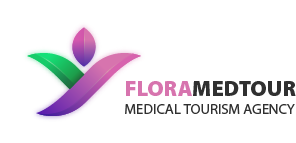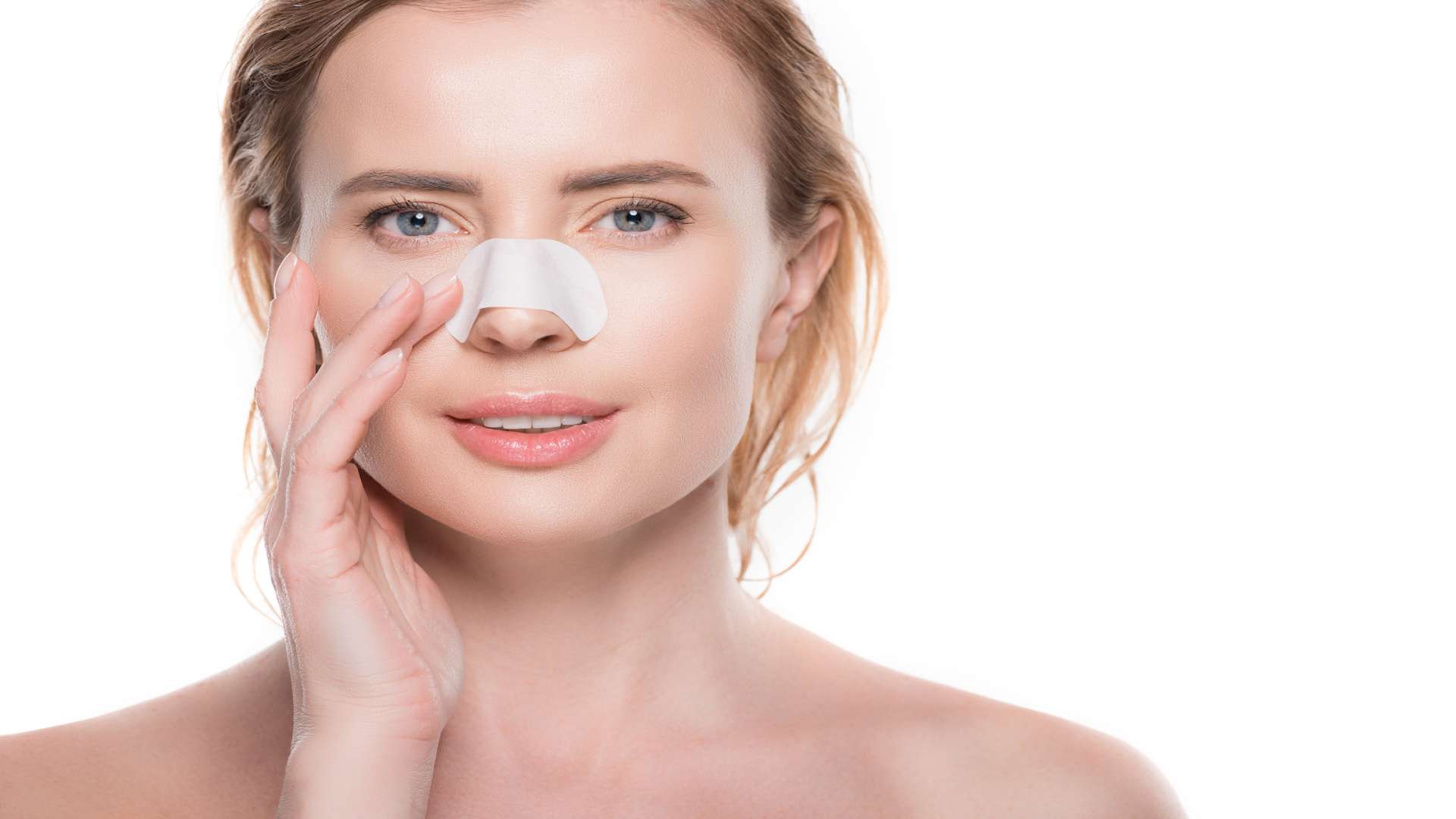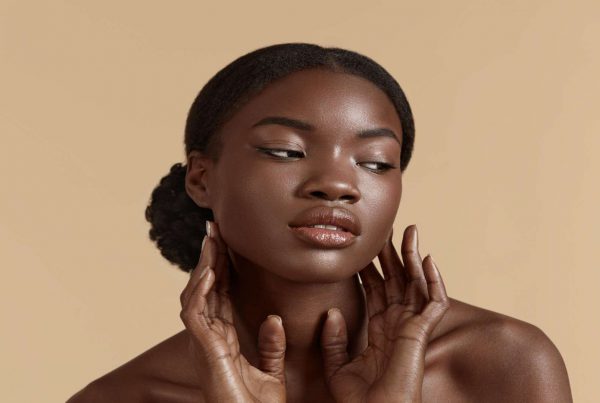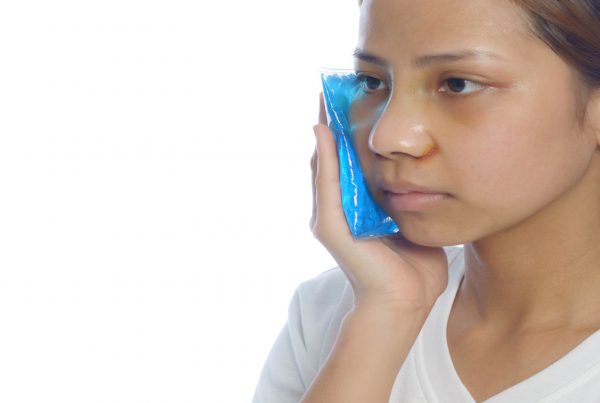Nose Taping
Nose taping is recommended for most patients who had nose surgery recently. The reason for its high acceptance is the various benefits it may produce for patients. Although the nose taping procedure itself is very simple, some related matters are necessary for patients’ consideration. In this article, we will provide you with all the information you should know to tape your noses properly. We show you how, when, and why to use nose tapes in the below sections.
What is Nose Taping?
Most plastic surgeons and orthorhinolaryologists are assuming taping the nose after rhinoplasty is an essential direction for patients to recover better after their nose job. In the same manner, it is recommended in most cases of rhinoplasty. However, some surgeons won’t suggest their Patients tape their noses after the surgery. But, if your doctor prescribes the nose taping for you, should cover your nose with nasal tapings according to their instruction. No matter which nose ethnicity or nose shapes you have, nose taping will have its benefits for your recovery period. But usually, nose taping will be advised to patients who have relatively thick nasal skin. As thick skin may take a longer time to shrink down, it is believed that it will help the swollen skin to heal faster for patients. Also, it may provide patients with various benefits which we will examine in the following.
Why should I Tape my Nose after a Rhinoplasty?
It is usually recommended for patients to tape their noses after their rhinoplasty at least for one month. Those surgeons, who believe that nose taping after rhinoplasty is needed, cited the following reasons for their claims. Taping the nose after a nose job will:
- Reduces the swelling and inflammation of the nose
- Helps the nose to heal faster
- Holds the nose in a better form by preventing the nasal tissues of the nose to expand
- Helps patients to gradually adjust to their new nose appearance
- It can serve as a signal for alerting others that your nose is vulnerable
- It will lead to a better and more predictable result
Is Nose Taping Necessary after a Rhinoplasty?
According to most plastic surgeons, yes. Most of them necessitate their patient to tape their noses after the surgery, as they believed that it will make the recovery period easier. In fact, it is proved that nose taping benefits patients with several advantages. In general, it is recommended to keep the habit of nose taping for 1-3 months after the rhinoplasty. Patients can put their nose tapes aside only when their doctor determined that it’s the right time.
After which Nose Surgeries Taping the Nose is Recommended?
As can we mentioned in the above section, taping the nose after a rhinoplasty has many benefits for patients. Besides the condition that patients are experiencing, the type of nose surgery that they had may necessitate them to tape their noses. In the following, we will examine the effectiveness of taping the nose procedure may have in different types of nasal surgeries.
-
Taping Nose after Rhinoplasty
Taping the nose can occur in both open and closed rhinoplasty. It Will result a more enhanced nose appearance and can heal the swelling more quickly.
-
Taping Nose after Septoplasty
Most patients of the septoplasty procedure will need to tape their noses after the surgery. It can help the fragile nasal structure to heal faster and better during the septoplasty recovery period.
-
Taping the nose after balloon sinuplasty
Doctors may order their patients to tape their noses after they had balloon sinuplasty, colloquially called sinus surgery. Nose taping after a sinus surgery depends on what condition does a specific patient experiences. It is ordinarily used to reduce the swelling caused after the surgery.
-
Taping the nose after turbinate reduction
Most patients may not require nose taping after their turbinate reduction surgery. Although, in some special cases, the doctor may consider nose taping necessary.
Nasal Splints Vs. Nose Tapes
Nasal splint and nose tapings are the two beneficial procedures that nose surgeries patients can take in order to recover faster and better. Their effectiveness of both nasal splints and nose tapings after nose surgeries is clear for plastic surgeons ENT specialists. Nasal splints will locate on patients’ noses before nose tapings. The splint will be placed on the patient’s nose right after the surgery. After 7-10 days, as the fragile nasal tissues get healed, the splints should be removed. From then to at least 1 month later, patients may need to tape their noses. These tapings will fasten the recovery procedure for nose job patients and reduce their swellings. In sum nose splints and nose taping are two factors that complement each other for resulting a better recovery procedure for patients.
Nose Taping Methods
There are two frequently used taping nose methods that doctors prescribe for their patients. Based on their condition, the required method for a patient may vary. You can see these two methods of nose taping procedure in the following.
-
Type 1
in this method, patients set a single piece of tape on the lower part of the nasal bridge, near the tip. The nasal tip wouldn’t be covered by tapes of this type.
-
Type 2
In type this method, patients put a layer of tape under the columella of the nose and then gently squeeze the tape around the tip. An additional strip of tape is placed on the supratip of the nose. This type is more frequent than the other one.
How to Tape my Nose after Rhinoplasty?
The nose taping procedure is very simple as most patients can tape their noses by themselves. Depending on your condition, your doctor may command you a specific nose taping procedure. Tough, the basics of taping after nose job are quite similar. We prepare the following section to give the required instructions for taping your noses properly.
-
Step 1- Clean the nose surface
Before anything, you should clean the nose and areas around it. You can use soaps or other facial cleansers for the cleaning.
-
Step 2- Tape the nose bridge
You should tape your nasal bridge first. It is recommended to take 3 to 5 inches of tape and place them on your nasal bridge in a way that each piece overlaps the previous one. After that, it is important to slightly squeeze the area you taped. Patients can tape their noses in front of a mirror to ensure that they placed the tapings in the right place.
-
Step 3-Tape the nasal tip
After tapes are placed on the bridge, it is time to wrap around the nose tip. You should start taping from beneath the nose tip and pull it slightly to form a “U” shape. Be careful not to obstruct the nostrils by taping.
-
Step 4-repeating the first step
In the last stage, in order to make the taping steady on your nose, you should repeat the first step. Note that mild pressure during the repeating process can help.
How to Remove Nasal Tapings?
Removing the nose tapes is as important as placing them. As your nose has not got fully healed, special care should be taken while the removal procedure. To avoid any pressure on the nose, you should remove the tapes smoothly and as gently as possible. After the tapes have been removed, you should wash the nose area to clean any sticky soot caused by tapes. It is usually recommended to patients remove their nose tapes in the morning and change them every 2 to 3 days. It is also better for patients to remove the tapes while they are wet. Patients can remove the tapes while they are showering.
Which Nose Taping Methods Flora’s Doctors Used in their Surgeries?
Due to the great reputation of cosmetic surgeries (especially nose surgeries) in Iran, there are many highly skilled surgeons working in our country. Most skilled among them have been employed by Flora medical tourism agency for performing our customers’ nose surgeries. Our surgeons will promise you first-rate nose surgery. In the case of nose taping, we prepare high-quality nose tapes (hypoallergenic medical grade paper tape) for our patients to use after their surgeries. The method that our doctor may instruct you to tape your nose when you back to your home depends on your condition. No matter which method is chosen for you, they will explain to you in detail how to tape the nose yourself. Moreover, they will check your recovery procedure during the follow-up online meeting. Any problem that you may have can be solved with the help of our medical experts. You can plan your needed nasal surgery with Flora simply by contacting our online team HERE. They will tell you more about the other details and benefits which our agency provides for its customers.
Tips to have a Better Nose Taping
As nose taping is very crucial for having a better recovery after nose surgeries, patients should be cautious while they are taping or removing the tapes. You can see the steps of nose taping above. In addition to the mentioned guidelines, we prepared the following tip by which you, yourself will able to tape your nose fitly.
- Use a mirror for ensuring that you place the tapes in the right place
- Clean the nose with a mild soap before taping it
- After you washed your face, wait for 10 minutes, and then tape your nose
- For the removal, wet the tapes
- Use proper nose tape, the one that your doctor prescribed
- Use 3-7pieces of short tapes and make sure that they overlap each other (for taping the bridge)
- Place the middle part of the tape under the nasal tip (for taping the nose tip)
- Tape the nose at night and remove it in the morning while you are showering
- Squeeze the taped area mildly to apply the tapes onto your nose
- Use shorter pieces of tapes (around 2 inches) to tape the nasal bridge
- Use longer pieces of tapes (around 4 inches) to tape the tip
- Tape your nose every night
- Remove the tape from down to the top
Side Effects of Nose Tapes
Generally, nose tapes will have no harm for patients. However, it may irritate some sensitive patients. Patients should consider that these side effects of nose taping are not life-threatening at all. Followings are the most reported problems that patients have with nasal tapes.
- Itching
- Reddening
- Acne
- Infection (happens when patients don’t change the tapes for quite a while)
- Problems in breathing
If these symptoms go severe, patients must inform their doctor immediately. Your doctor may change his mind on the necessity of nose taping for you when seeing that you are suffering from these problems. Of course, these problems occur rarely and only in patients who have ultrasensitive skin.
What Nasal Splints are Flora’s Doctors Used in their Surgeries?
Because of the high popularity of cosmetic surgeries (especially nose surgeries) in Iran, there are many highly skilled surgeons working in our country. Most skilled among them have been employed by Flora medical tourism agency for performing our customers’ nose surgeries. Our surgeons are promising the most top quality for your nose surgeries and this also includes high-quality nasal splints. We prepare the nasal splints used for our patients from the best manufactures in the world. As a result, Flora’s beloved patient wouldn’t feel any discomfort caused by their nasal splints. You can plan your needed nasal surgery with Flora simply by contacting our online team HERE. They will tell you more about the other details and benefits which our agency provides for its customers.
Can I Tape My Nose by Myself?
As the overall procedure for nose taping is not complicated, most patients can do the taping themselves. However, doctors must make sure that they directed their patients to tape their noses correctly. The advantage that Flora’s patients will have in this case is our consistent follow-up program. During the follow-up sessions, your doctor will see if you have any problem with taping your nose by yourself. Surely, he will give you the needed instruction if you taped your nose wrongly.
Post-operative Care and Follow up for Nose Taping
Although the overall procedure for taping your nose is not so difficult, the supervision of a medical expert is essential. In flora, we are fully aware of this fact. Hence, we provide our beloved customers with a follow-up program that will be continued for two years after their surgery. During these follow-up sessions, your doctor will check your condition and make sure that you haven’t any problem regarding your recovery procedure. He will ensure that you have placed the nose tapes appropriately by observing the pictures that you will send. This and many other benefits that Flora medical tourism agency profit to its patient made our medical services highly demanded. You can see the interest that we offer to our beloved patients in the following.
- Best orthorhinolaryologists (ENT doctors) of the world
- Most economical cost for cosmetic\medical procedure in the world
- Flora’s CRM system (customer relationship management)
- Flora’s specialized follow-up team will monitor your condition for two years after your medical procedure
- Best accommodations in Iran
- An optional sightseeing tour
- Flora’s general services: you can see all these services that we provided for our customers HERE.
If you became interested in having your needed cosmetic\medical procedure with Flora, you can simply contact us by clicking HERE. Our online team will help you for planning your utmost nose surgery in Iran.
When should I Call my Doctor?
Having a nasal splint may have some side effects but it’s not dangerous at all. However, patients can contact their doctor to get help for treating the problems caused by splints. For Flora’s patients, there is no need for worries over these complications as our follow-up team will monitor your condition daily. In general, patients should inform their doctors in the following conditions:
- Experiencing harsh pain in the nose
- When nasal splints increased the swelling
- Intense Nose bleeding
- Having intolerable difficulties in breathing
- When a nasal splint fell from your nose
- Tapping the nose after splints removal
After the doctor removed the nasal splints from patients’ noses, he should give instructions on how to tape their noses. The doctor’s direction on taping the nose after the surgery is necessary for having a finer recovery. Patients should call their doctors if they have faced any problem with tapping their noses. It should be noted that Flora’s beloved patients will be fully directed for taping their noses after the surgery. Further, our online follow-up team will check your condition periodically. The nose taping should be continued for at least a month after the surgery. Some patients may need to tape for 3 months. To get more information on the nose tapping procedure, please visit Flora’s nose tapping page HERE.
Nasal Tampons Vs. Nasal Tapes
Although the tampons and tape have completely different functions, they are both necessary for patients. Tampons are majorly used for filling the nasal cavity and applying pressure over the bleeding point after the rhinoplasty. As soon as the bleeding stops, the tampons would be removed. In contrast, patients should keep their nose tapes at least for one month after the surgery. Also, the materials used in tampons and nose tapes are quite different. Usually, tampons are made of polyvinyl alcohol (a compressed foam polymer). Contrastively, nasal tapes are plainly flexible, soft bands.
Last Word
So far, the important role of nose tapes should be clear to you. In the above article, we showed you how nose taping may serve patients along with some other related discussions. After reading this article, It is believed that nose surgery patients wouldn’t have any questions regarding the issues of nose taping. However, if you still need more information, you can contact Flora’s online team. Our team of medical experts will help you eagerly to get any information you need. We’ll be there for you 24\7. Contact us by clicking HERE.
Nose Taping Frequently Asked Questions
Can taping your nose make the nose smaller?
Nose taping won’t reduce the size of your nose. However, it can be used for reducing the swelling and inflammation followed the rhinoplasty. You can make your nose look smaller and more elegant by having nose cosmetic surgeries.
How long you should tape your nose after rhinoplasty?
The duration that patients have to tape their noses after rhinoplasty is dependent on their condition and the doctor’s direction. In most cases, patients need to tape their noses at least for one month. In contrast, some patients may need to tape their noses for even 3 months after the surgery.
Does putting tape on your nose work?
Surly Yes. Nowadays, many plastic surgeons believe that nose taping plays an important role in patient’s recovery procedures after nose surgeries. Similarly, many patients have reported that the nose tapes work for them.
What is the purpose of taping the nose after rhinoplasty?
Nose taping may provide various benefits to patients after their nose surgeries. In the following, you can see the purposes of using nose tapes after the surgery.
- Decreases the swelling
- Make the nose heal faster
- Form the nose
- It can work as a sign that people should treat you delicately
- It works as a psychological bridge for patients to get adjusted to their new appearance
Can is shower while I wear nose tape?
Yes. Actually, it is highly recommended to patients to wet their tapings while they are showering. By pouring water onto the nose tapes, patients can remove them easier, without any problem.
Can I tape my nose all the time?
Nasal tapes may result problems for patients if they use them for a long time. You should remove the tapes as soon as your doctor recognized. Usually, nose taping will be necessary for 1-3 months after rhinoplasty.
Does taping after rhinoplasty help?
Yes. Truly, nose tape may offer many helps for patient after their nose surgeries. That is why most doctors prescribe their patient to tape their noses during their recovery period.
Does taping the nose help smelling?
No, it’s just a myth. Nose taping may have several advantages for patients, but it won’t improve their sense of smell.
Does taping nose change shape?
Having nose tapes on your nose will decrease the swelling of your nose after a rhinoplasty. These tapes won’t change the nose shape, as they are only used as coverage to the nose. For reshaping your nose structure to a more elegant shape, you should have nose cosmetic surgeries.








Recent Comments